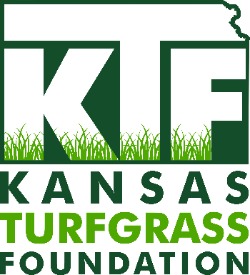Rust (Puccinia spp.)

Rust is a common disease on residential lawns. It is caused by a variety of related fungi and occurs almost exclusively on Kentucky bluegrass and perennial ryegrass. The disease is largely cosmetic, although severe rust infection clearly weakens and thins the turf stand. From a distance, rust-infected turf has a yellow green cast. During early stages of disease development, symptoms occur in localized areas, especially in shaded sites. Close inspection of rusted leaves reveals numerous yellow orange pustules on leaf blades. Walking through grass with significant amounts of infection will disturb and release spores within the pustules and result in a distinct orange color on one's shoes.
Occurrence
Rust outbreaks are most common in late summer and early fall, although sometimes the disease may be active in the early spring (especially on poorly nourished turf). It is a disease of slow growing turf. Therefore, factors that contribute to poor growth tend to favor rust development. These factors include summer heat and drought stress, low nitrogen fertility, compaction, and shade. Moderate temperatures (50 o – 60 o F) and long evening dew periods (greater than 10 hours) are required for rust outbreaks. The pathogen survives in the form of weather-resilient structures in dormant turf and spreads by means of wind and splash-dispersed spores during the growing season.
Non-Chemical Control
Some varieties of Kentucky bluegrass and perennial ryegrass are less susceptible to rust infection and sustain less damage. However, differences probably will be negligible under conditions that are not favorable for disease development, i.e. where turf is healthy and given a moderate amount of care. Maintaining a healthy and vigorous stand of turf is the most effective and efficient method of rust control. Since slow growing turf in late summer is most vulnerable to outbreaks, small amounts (0.25 – 0.5 lb N per 1,000 sq ft) of nitrogen fertilizer in chronic trouble spots (shaded and possibly compacted areas) will contribute to disease control. The resumption of leaf growth and regular mowing will help the turf outgrow the relatively slow rust infection cycle. Avoiding irrigation during early evening hours will help limit disease spread by lessening the chance of extended dew periods.
Chemical Control
A variety of effective fungicides are registered for rust control. However, this is a disease that can be managed with a moderate nitrogen fertility program and the other non-chemical controls suggested above. Fungicides should not be necessary for residential lawns. If the homeowner decides to pursue the chemical control option, then a professional lawn care service should be contracted for the application.



